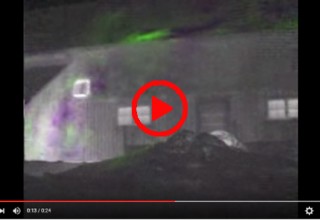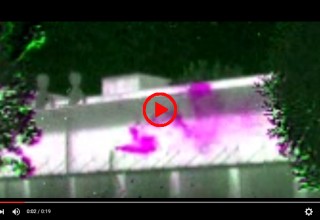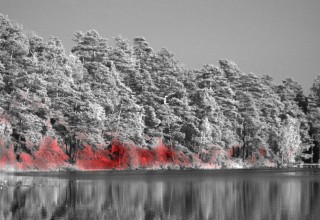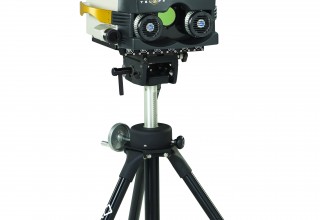A New Technology Allows You to View Real-Time Methane Emissions
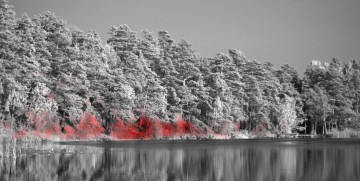
Quebec City, Canada, December 16, 2015 (Newswire.com) - Telops, a company based in Quebec City (Canada) and specialized in the design and production of infrared and hyperspectral infrared cameras, has developed a camera that is able to accurately detect minute methane leaks and emissions and film them in real time.
Methane is a powerful greenhouse gas. According to the United States Environmental Protection Agency (EPA), “Pound for pound, the comparative impact of CH4 on climate change is more than 25 times greater than CO2 over a 100-year period.” It is released into the atmosphere from many different sources, both human (landfill sites, animal husbandry) and natural (wetlands, glaciers). “This is why it is so critical to be able to detect in a simple and efficient manner the exact location from which methane emanates,” says Martin Chamberland, Telops’ vice-president.
Scientists from Sweden were able to film methane emissions in real time - a breakthrough that could play a significant role in the fight against climate change.
With Telops' Hyper-Cam Methane, scientists are able to detect and identify methane present in a scene and to locate it precisely in an image or video, pixel by pixel. Recently, scientists from Linköping University, in Sweden, were thus able to "film" methane emissions in real time – a breakthrough that could play a significant role in the fight against climate change.
Their results were published in the prestigious journal Nature Climate Change (http://tinyurl.com/pal9f4h).
The most sensitive methane detection and identification camera there is
The Hyper-Cam Methane is more sensitive than anything that has been developed before, and is able to detect and identify extremely small amounts of methane, down to 1 ppm (part per million). This high sensitivity makes all the difference, according to Magnus Gålfak, the Linköping University professor who led the study published in Nature. “Being able to measure on a small scale is crucial.”
Since the Hyper-Cam Methane is both compact and light, compared to other hyperspectral cameras available on the market, scientist can use it directly on site, even in hard-to-reach areas.
Moreover, it can be used to monitor vast areas in the same image, something that was not possible before. And thanks to its airborne platform that reduces and compensates for aircraft vibrations and yaw, it is possible to efficiently map methane emissions over an entire region from the air.
For more information
Please visit these pages and/or contact us:
http://tinyurl.com/pal9f4h (the Nature article)
http://tinyurl.com/hy35tpl (the Linköping University about the breakthrough)
http://tinyurl.com/pls3f9x (the Hyper-Cam Methane brochure)
http://tinyurl.com/j9te8ca (visualisation of a controlled release of methane)
http://tinyurl.com/ottqbug (visualisation of methane emissions from the vent of a cow barn)
http://tinyurl.com/qg79o6d (the Hyper-Cam image)
About Telops:
Since 2000, Telops specializes in the design and production of sophisticated optoelectronic, infrared systems for the environment, defense and security, and industrial and academic research. Telops produces a great variety of infrared and hyperspectral infrared cameras, among which are the fastest thermal infrared camera on the market (the FAST-IR) and the powerful Hyper-Cam, an hyperspectral camera that can detect, identify, and quantify – from a distance – substances and material invisible to the naked eye.
To contact Telops:
Marie-Eve Lang
Marketing Coordinator, Telops
100-2600 St-Jean-Baptiste Avenue
Quebec (Quebec) G1V 5B9
Canada
Tel.: +1 (418) 864-7808, ext. 409
marie-eve.lang@telops.com
www.telops.com
